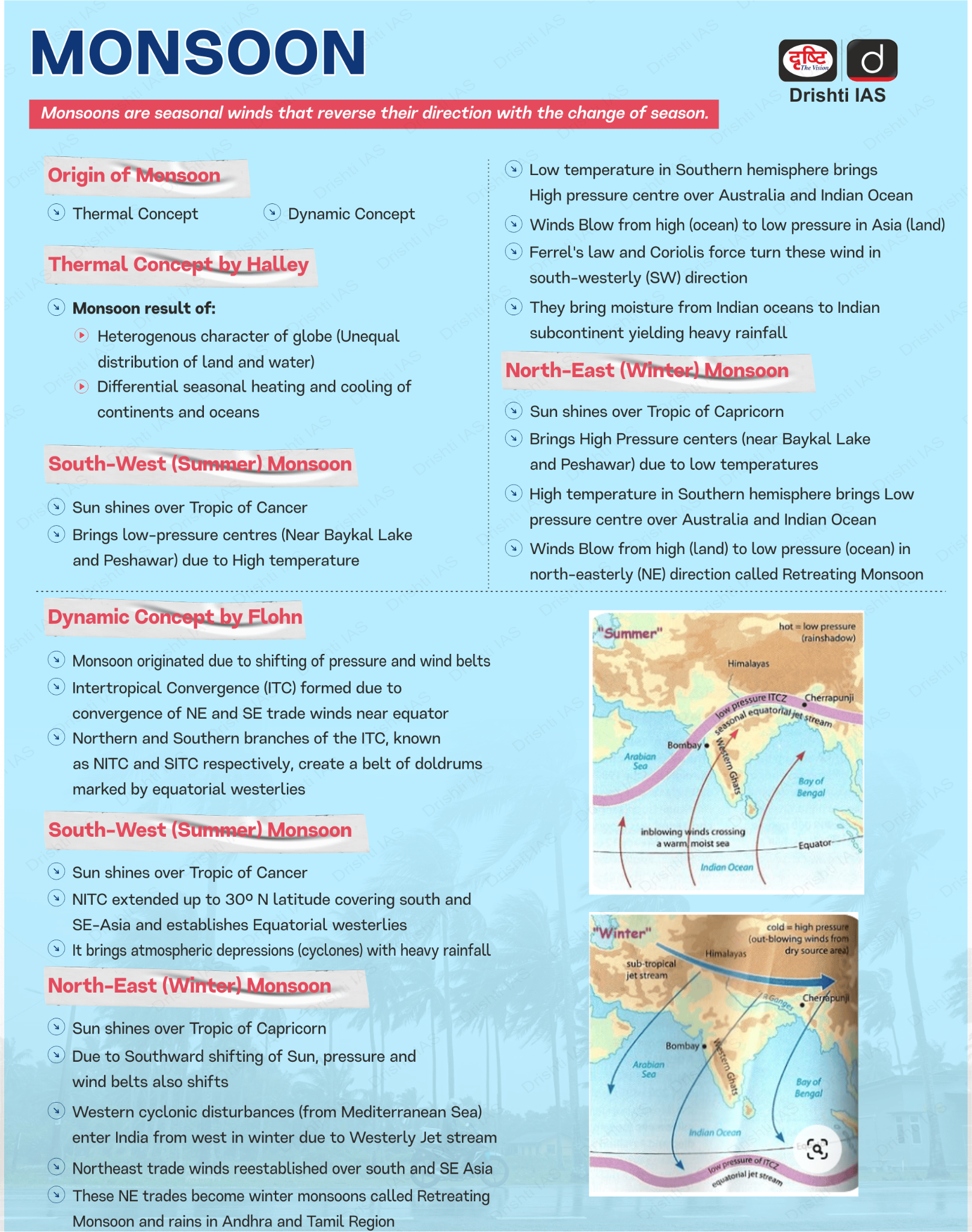Important Facts For Prelims
Lowest Paddy Sowing in Decade
- 19 Jul 2024
- 6 min read
Why in News?
According to data released by the Department of Agriculture and Farmers Welfare in June 2024, the area under paddy cultivation has been reported to be only 2.27 million hectares (mha) so far.
- June 2024 saw the smallest area sown with paddy, India's primary Kharif crop, in the past decade, except for the drought-affected year of 2015.
What are the Reasons for the Decline in Paddy Sown Area?
- Historical Comparison:
-
According to data from the Crop Weather Watch Group in 2016 and 2017, the area under paddy was 3.90 mha and 3.89 mha respectively, and has since fluctuated between 3.60 mha and 2.69 mha, with 2023 figures of June being slightly higher than 2024.
-
-
Reasons for Decline in Paddy Sowing:
- Changing Rainfall Patterns: Farmers have shown apprehensions regarding 'normal' rainfall, leading to a shift in sowing operations from June to July.
- This change is due to the increasingly erratic rainfall patterns observed over recent years. In June 2024, for instance, there was an 11% rainfall deficit.
- The month of June is no longer suitable for Kharif sowing for millions of farmers due to these adverse conditions.
- Agricultural Requirements: Paddy cultivation requires continuous flooding of fields up to 10 centimeters for two weeks during the transplantation stage.
- Impact of Dry June: June is crucial as it marks the onset of the southwest monsoon season, providing necessary soil moisture for 61% of India's rain-fed agriculture. A dry June results in inadequate ground moisture levels, making sowing challenging for farmers.
- Analysis of the data of the period 1988-2018 by Down To Earth covering 676 districts in India showed that 62% of the districts experienced a decrease in June rainfall.
- Changing Rainfall Patterns: Farmers have shown apprehensions regarding 'normal' rainfall, leading to a shift in sowing operations from June to July.
- Implication:
- The traditional crop calendar, detailing sowing and harvesting times alongside average rainfall and temperature, has become outdated due to these changes.
- The decline in the area sown with paddy by the end of June 2024 is indicative of the broader challenges faced by Indian agriculture, particularly the impact of erratic monsoon patterns.
- While other Kharif crops have seen an increase in sown area, the overall trend underscores the necessity for better weather forecasting and adaptive farming practices to cope with changing climate conditions.
What are Kharif Crops?
- Kharif crops are the crops that are sown in the rainy season, usually beginning in June with the onset of the southwest monsoon, while the crop marketing season will run from October 2024 to September 2025.
- Some of the major kharif crops are paddy, maize, millets, pulses, oilseeds, cotton and sugarcane.
- Kharif crops account for about 55% of the total foodgrain production in India.
- The Union Cabinet recently gave its nod to raise the Minimum Support Price (MSP) for paddy by 5.35% to Rs. 2,300 per quintal for the upcoming 2024-25 kharif marketing season.
- The Cabinet approved MSP hikes for all 14 kharif season crops, in alignment with the government’s “clear policy” of keeping MSPs at least 1.5 times above the cost of production as calculated by the government.
- However, only four of these crops have MSPs that will provide farmers with a margin of more than 50% above their production costs namely bajra (77%), followed by arhar dal (59%), maize (54%), and black gram (52%).
- In 2024, MSP hike is likely to result in a total financial implication of Rs 2 lakh crore, about Rs 35,000 crore higher than the previous season.
Read More: Centre Sets Minimum Support Price for Kharif Crops
UPSC Civil Services Examination, Previous Year Question (PYQ)
Prelims:
Q. Consider the following statements: (2023)
- The Government of India provides Minimum Support Price for niger (Guizotia abyssinica) seeds.
- Niger is cultivated as a Kharif crop.
- Some tribal people in India use niger seed oil for cooking.
How many of the above statements are correct?
(a) Only one
(b) Only two
(c) All three
(d) None
Ans: (c)
Q. Consider the following statements: (2020)
- In the case of all cereals, pulses, and oil seeds, the procurement at Minimum Support price (MSP) is unlimited in any State/UT of India.
- In the case of cereals and pulses, the MSP is fixed in any State/UT at a level to which the market price will never rise.
Which of the statements given above is/are correct?
(a) 1 only
(b) 2 only
(c) Both 1 and 2
(d) Neither 1 nor 2
Ans: (d)





